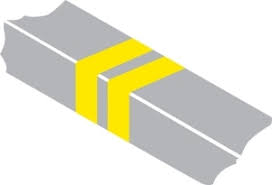Understanding the Significance of a Single Yellow Line on the Pavement in the UK

The Significance of a Single Yellow Line on Pavement
Single yellow lines painted on the pavement play a crucial role in regulating parking and traffic flow in urban areas. These markings are a common sight in many cities and towns across the United Kingdom, but their significance is often overlooked by pedestrians and motorists alike.
What Does a Single Yellow Line Mean?
A single yellow line on the pavement indicates parking restrictions at certain times of the day. The exact restrictions can vary depending on the location and local regulations, but typically, parking is prohibited during specific hours indicated on nearby signs.
Why Are Single Yellow Lines Used?
The use of single yellow lines helps to manage traffic congestion, improve road safety, and ensure the smooth flow of vehicles in busy areas. By restricting parking at certain times, authorities can prevent obstructions that may hinder emergency vehicles or disrupt the overall traffic flow.
Understanding Parking Regulations
It is important for motorists to familiarise themselves with local parking regulations to avoid fines or penalties. Ignoring parking restrictions indicated by single yellow lines can result in fines, towing of vehicles, or other enforcement actions by local authorities.
Respecting Traffic Laws
Respecting single yellow lines on the pavement is not only a legal requirement but also a matter of courtesy towards other road users. By adhering to parking restrictions indicated by these markings, motorists contribute to safer and more efficient traffic management in urban areas.
Conclusion
In conclusion, single yellow lines on the pavement serve as important indicators of parking restrictions that help maintain order and safety on our roads. It is essential for both pedestrians and motorists to understand and respect these markings to ensure smooth traffic flow and compliance with local regulations.
Understanding UK Parking Rules: A Guide to Single Yellow Lines and Pavement Restrictions
- Can you park on pavement next to yellow lines?
- What is the yellow line on the ground?
- What does one yellow line on pavement mean?
- What is the difference between single and yellow lines?
Can you park on pavement next to yellow lines?
One frequently asked question regarding single yellow lines on the pavement is whether it is permissible to park on the pavement next to these markings. In the United Kingdom, parking on the pavement is generally prohibited, regardless of the presence of yellow lines. The Highway Code advises motorists not to park on the pavement unless signs specifically permit it. Parking on pavements can obstruct pedestrian pathways, create safety hazards, and impede access for individuals with disabilities or pushchairs. Therefore, it is important for drivers to adhere to parking regulations and avoid parking on pavements next to yellow lines to ensure road safety and accessibility for all road users.
What is the yellow line on the ground?
The yellow line on the ground, often referred to as a single yellow line, is a common road marking used to indicate parking restrictions at certain times of the day. This marking plays a crucial role in managing traffic flow and ensuring road safety in urban areas. Understanding the significance of the yellow line is essential for motorists to comply with parking regulations and avoid potential fines or penalties imposed by local authorities. By respecting and adhering to these markings, drivers contribute to maintaining order and efficiency on the roads while promoting a safer environment for all road users.
What does one yellow line on pavement mean?
The presence of a single yellow line on the pavement signifies parking restrictions during specific times of the day. This common road marking indicates that parking is prohibited at certain hours, typically as detailed on nearby signage. Understanding the meaning of a single yellow line is essential for motorists to comply with parking regulations and avoid potential fines or enforcement actions by local authorities. By respecting these markings, drivers contribute to smoother traffic flow and enhanced safety on urban roads.
What is the difference between single and yellow lines?
A common question regarding road markings is the difference between single and double yellow lines. Single yellow lines on the pavement indicate restricted parking at certain times, typically with specific hours displayed on nearby signs. On the other hand, double yellow lines signify a complete prohibition on parking at any time. Understanding this distinction is crucial for motorists to comply with parking regulations and avoid potential fines or penalties imposed by local authorities.
